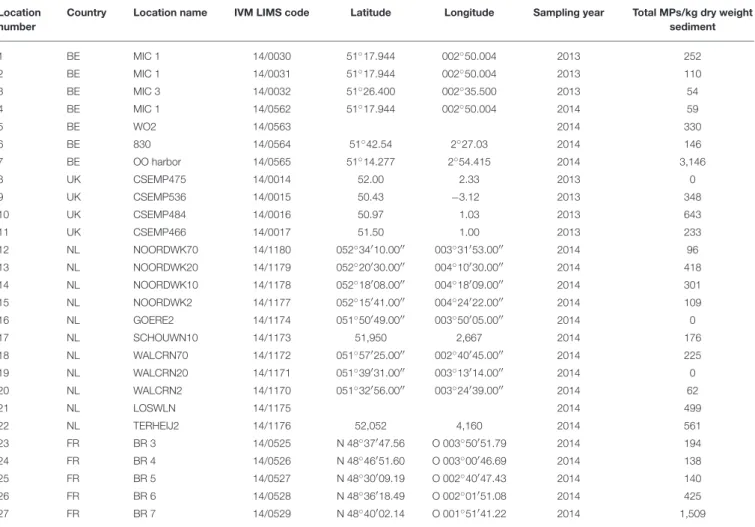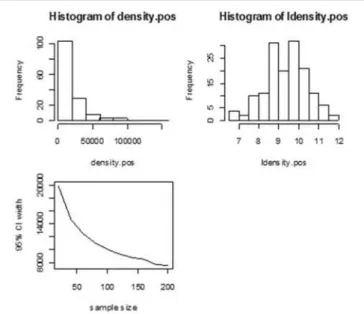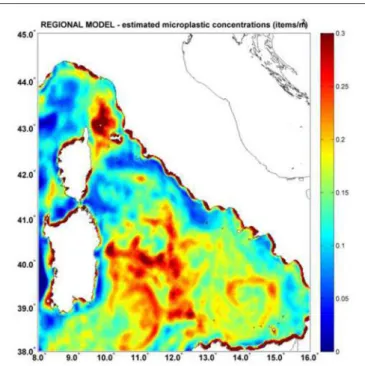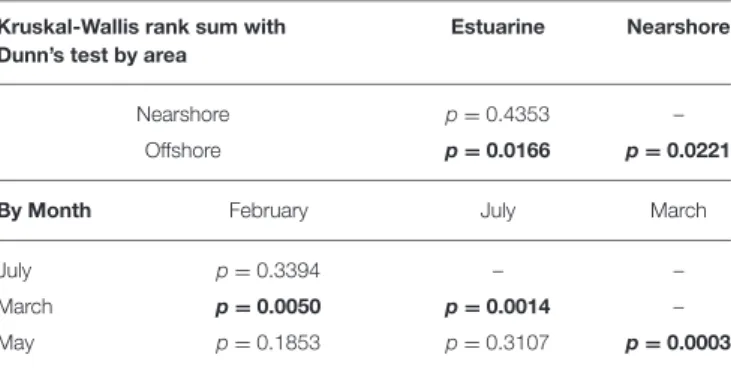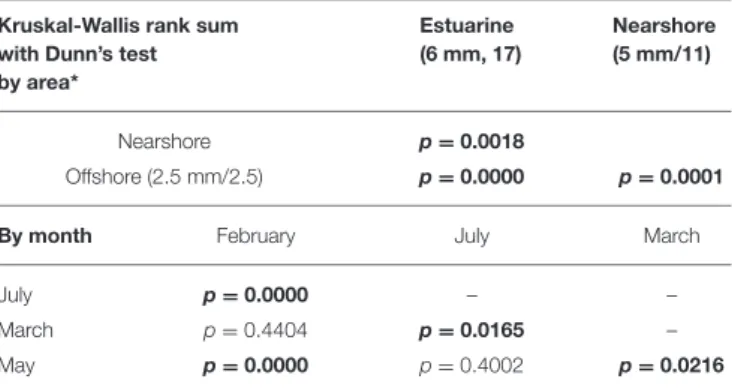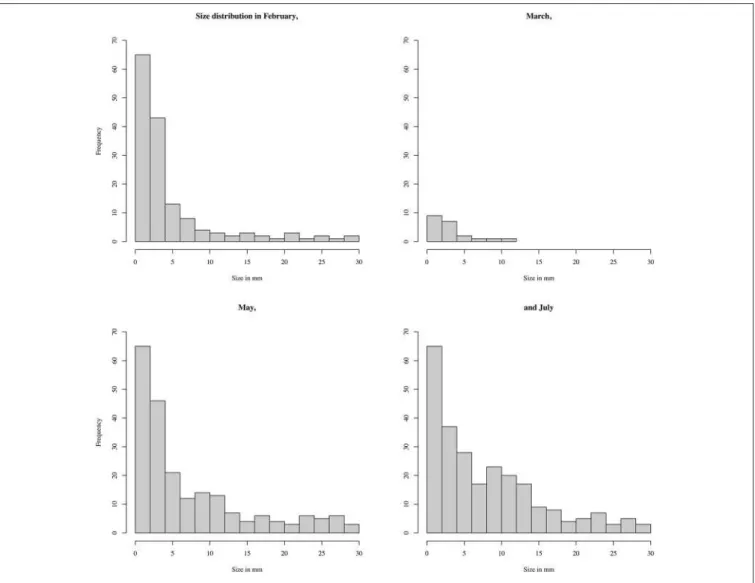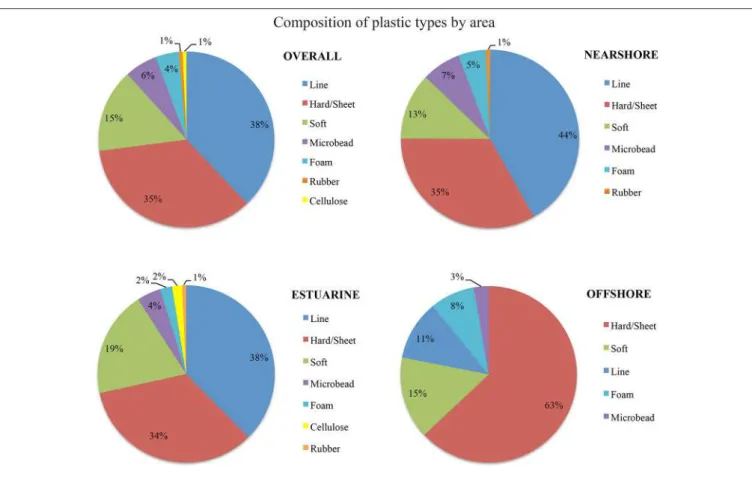Microplastics Baseline Surveys at the surface and in sediments of the Northeast Atlantic. Litter accumulating in the marine environment can be one of the greatest threats to the planet.
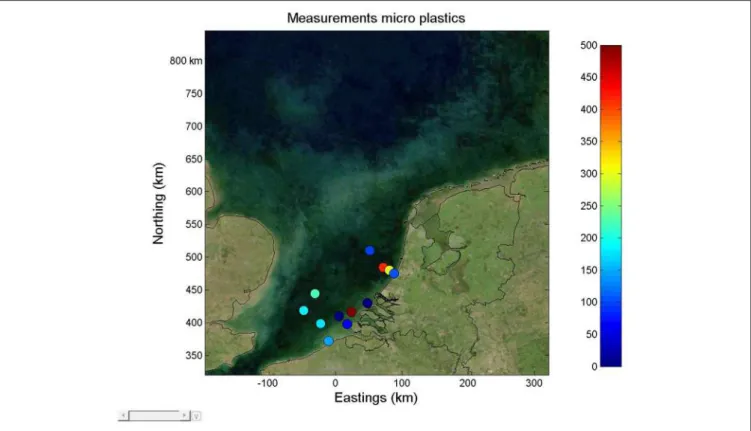
RESULTS
Here, the dry weight (DW) of the sediment was determined as a percentage of the wet weight. The histogram of non-zero observations and the natural log of these values are shown in Figure 7.
DISCUSSION
The abundance of microplastics on the sea surface has been shown to vary with wind speed due to vertical mixing (Kukulka et al., 2012; Brown shrimp collected in the same study area also contained mainly fibers (Devriese et al., 2015).
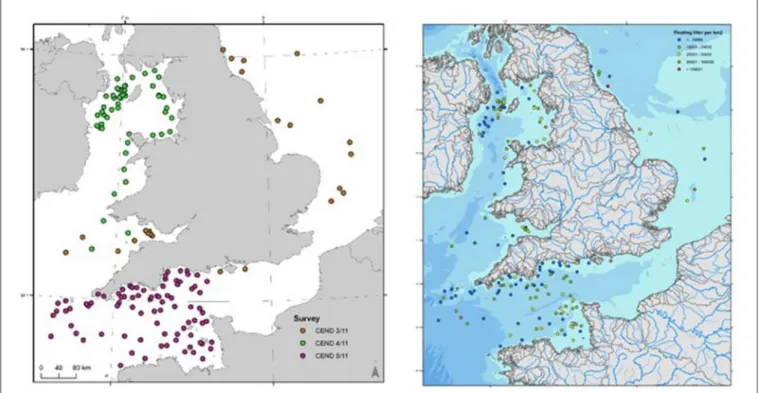
CONCLUSIONS
A previous study of microplastics in the deep sea suggested that aggregation of microplastics with organic matter, such as marine snow and faecal pellets from marine organisms, could play a role in the sinking processes (Van Cauwenberghe et al., 2013). This also indicates that benthic organisms that burrow and live in muddy environments are likely to be exposed to higher concentrations of microplastics than benthic organisms in areas with a larger grain size and lower TOC.
AUTHOR CONTRIBUTIONS
We suggest that future monitoring programs continue to distinguish microplastic particle type as well as sample size fractions, and advise that microplastics be monitored in sediments with standard mesh sizes and devices such as van Veen traps to allow future spatiotemporal comparison of microplastic abundance in wider marine environments.
ACKNOWLEDGMENTS
Microplastic contamination in brown shrimp (Crangon crangon, Linnaeus 1758) from coastal waters of the southern North Sea and English Channel. Mar. atmospheric precipitation: a source of microplastics in the environment? Mar. Size, mass and composition of plastic debris in the western North Atlantic Ocean. Mar.
INTRODUCTION
During the sampling cruise period (September 2014), the circulation in the North Tyrrhenian and Ligurian Seas was determined by joint analysis of satellite and modeling data: sea level anomalies (SLA), absolute dynamic topography (ADT), sea surface temperature (SST), chlorophyll a (Chl-a) concentrations and hydrodynamic models at the scale of both basins (Copernicus Sea reanalysis). Environmental Monitoring Service, CMEMS) and at regional level (Tyrreno-ROMS). Microplastic concentrations (circle) and whale and dolphin sighting data (white star: Balaenoptera physalus, pink star: Stenella coeruleolba, Tursiops truncatus, Grampus griseus) plotted on both maps.
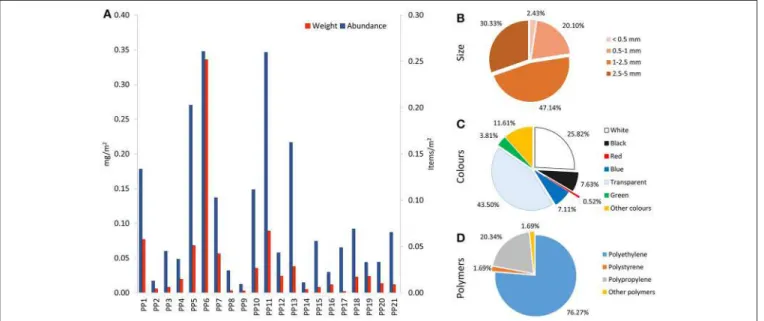
ETHICS STATEMENT
In particular, future work should include in the simulation model potential sources of marine debris (such as ports, rivers and shipping lanes) to better characterize the origin of marine debris in the Pelagos Sanctuary to establish targeted conservation/mitigation actions based on, for example, the characterization of polymer plastic items, for example, fish packaging activities, mainly from PE, packaging and fish packaging activity and mainly from PE. Actions should promote instruments and incentives to reduce the single-use use of other items and identify measures to address the main wastes from the fishing and aquaculture industry, as outlined in the UNEP/MAP Regional Plan for Marine Waste (UNEP/MAP, 2015).
FUNDING
In conclusion, to our knowledge, this is the first study in which simulated plastic distributions show quantitative agreement with distributions derived from a floating debris dataset. The overlay of microplastic convergence zones with fin whale feeding grounds may serve as a provisional model for assessing risk to marine biota in this and other SPAMI areas.
SUPPLEMENTARY MATERIAL
The first record of plastic debris in the stomach of Mediterranean lampreys [Prvi zapis o plastiˇcnim krhotinama u želucu mediterranisih riba žaboglavki (Myctophidae). One proposed mechanism for such separation is wave activity, particularly along coastlines (Corcoran et al., 2009; Andrady, 2011).
MATERIALS AND METHODS Study Areas
The most common type of plastic overall was fishing line (38%), especially in nearshore areas and estuaries, followed closely by hard plastic fragments (35%), which dominated the sea. Microplastics in the marine environment: a review of methods used for identification and quantification. The environment.
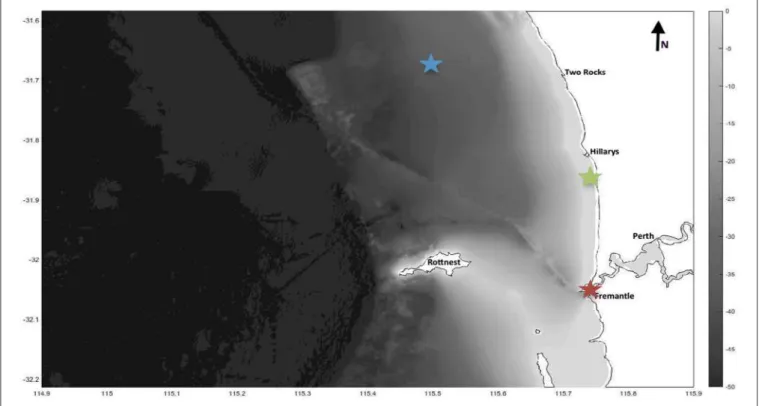
RIVERINE LITTER OBSERVATION NETWORK–THE APPROACH
In the marine environment, methodologies and protocols for visual observation at sea have been proposed by several institutions and scientific research groups, such as UNEP (Cheshire et al., 2009), Hinojosa and Thiel (2009), European Commission (EC JRC, 2013), NOAA Marine Debris Program (NOAA, 2013), Ryan (2013), DeFishGear (2014) and UNEP/M AP (2016). Only recently have some research efforts been devoted to the study of river litter and its inputs into the marine environment, mostly focusing on microplastics (Surfrider Foundation Europe, 2014; Hohenblum et al., 2015; van der Wal et al., 2015). The methodological approach considers regular short monitoring sessions (30-60 min) in the estuarine section to account for inputs to the sea, using the tablet application described in the JRC Floating Debris Monitoring Application section, to carry out visual observations from an elevated position (e.g. bridges, jetties, pontoons and others).
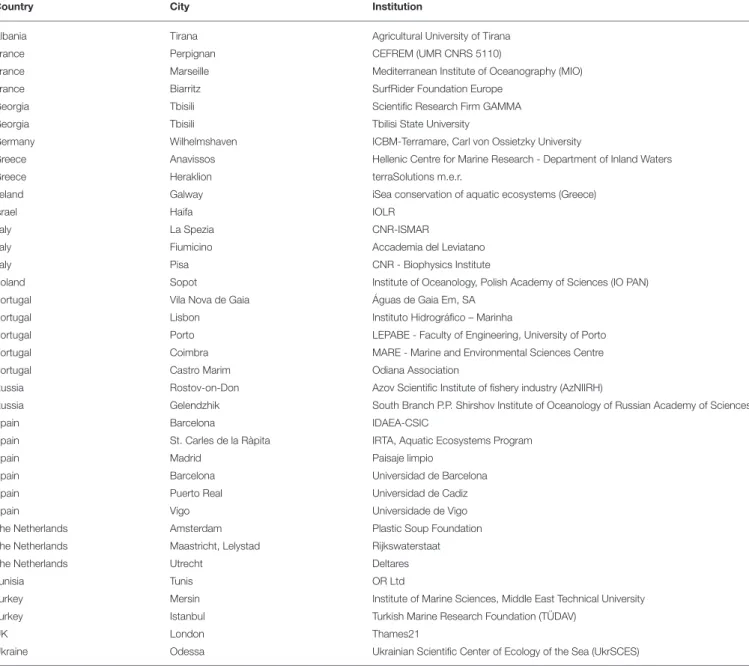
THE JRC FLOATING LITTER MONITORING APPLICATION
The collected data will be processed to process the results and build a statistical inverse litter load model based on catchment characteristics. Polyethylene, which represents almost 30% of the annual demand for plastics in the European Union, is the most commonly used. It also represents 79% of the polymers in microplastics sampled at sea or in the marine environment (Hidalgo-Ruz and Thiel, 2013).
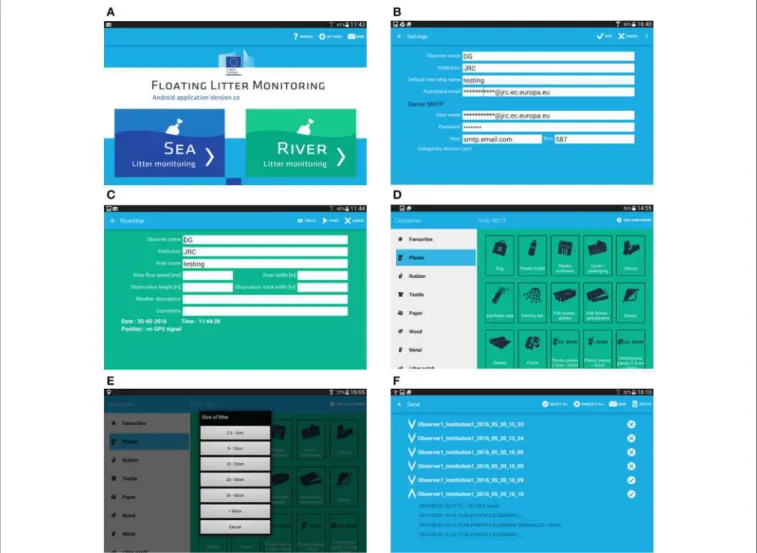
MATERIALS AND METHODS Experimental Setup
An extrusion plastometer/melt flow index (MFI) tester (ZWICK ROELL, Ulm, Germany) was used to calculate the relative changes in the molecular weight of the samples. FTIR is preferred in this case due to the measurement of the entire wavelength range at once. Weathering of plastics due to exposure to UV light in the presence of atmospheric oxygen leads to the breaking of the.
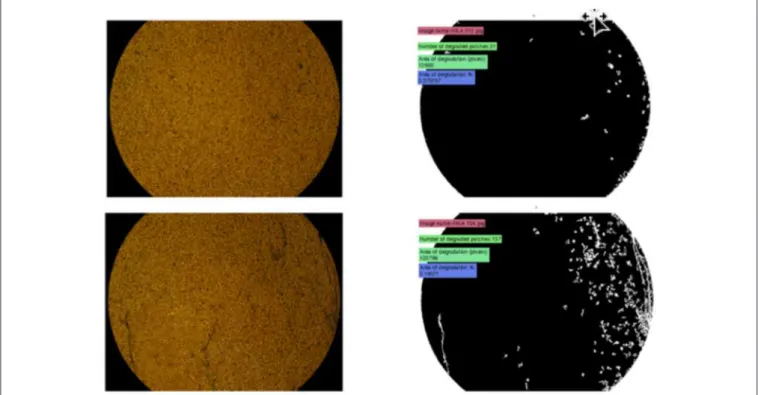
CONCLUDING REMARKS
Microplastics in the marine environment. Mar. Changes in carbonyl index and average molecular weight on embrittlement of enhanced-photodegradable polyethylenes.J. Microplastics as contaminants in the marine environment: a review.Mar. Nano)plastics in the environment - Sources, fates and effects.Sci. Furthermore, organisms can change the pathways in the marine environment by direct transport and/or changing the density of the particles.
BACKGROUND
Instead, simulations using numerical models of ocean currents can be used to estimate the sources, sinks and pathways of microplastics in the marine environment. The various factors that contribute to the pathways of microplastics in the ocean are an active area of research. Considering the fate of microplastics in the ocean requires improving understanding of where plastics reside in reservoirs and what the rates of fragmentation are under different conditions (and for different materials and sizes of primary plastic).
CURRENT ASSESSMENT
However, most samples of coastal and offshore microplastics occur in the upper ocean surface and thus samples of positively living items. Better estimates and data describing buoyancy, i.e., sinking and re-suspension or floating rates will also provide insight into the fate of plastic in the ocean. Connie2 Australian Connectivity Interface, online tool developed by CSIRO Reisser et al., 2013 ECCO Ocean Circulation and Climate Assessment—The Scripps Institution i.
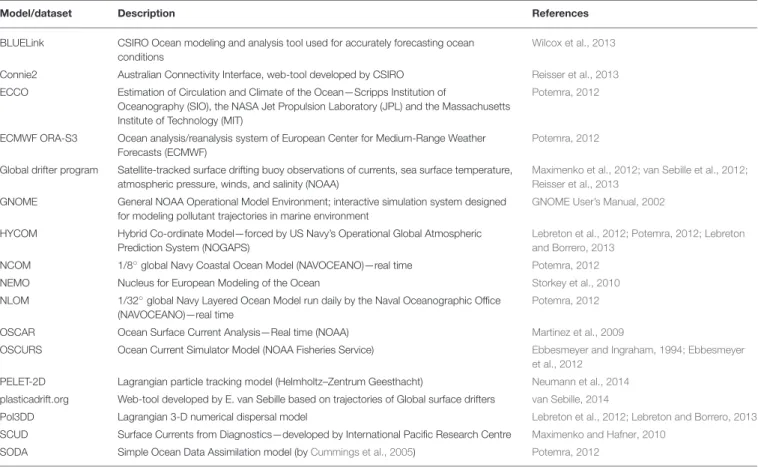
THE APPLICATION OF NUMERICAL MODELING
Numerical modeling has been used to trace back or hindcast where plastic in the ocean may have come from (sensu; Kako et al., 2011), and the same approaches could be used for microplastics. Modeling efforts have improved significantly in recent years, and as computing power increases, so does our ability to incorporate additional parameters in simulating the movement of marine debris in the ocean. However, this will require the development of mainly new models that include processes that are poorly understood today: e.g. momentum injection by breaking wind waves, diurnal cycle in the ocean and atmospheric boundary layer, etc.
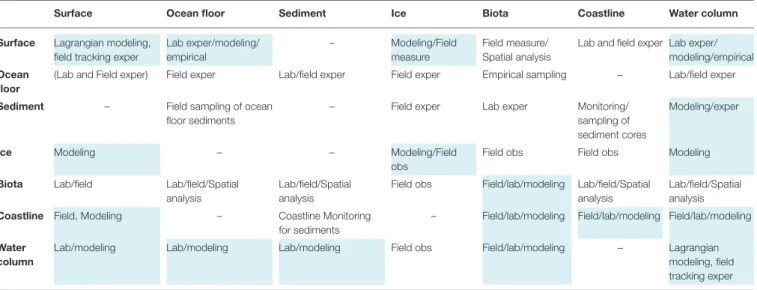
KEY CHALLENGES AND OPPORTUNITIES
However, no evidence of permanent accumulation of litter in the Mediterranean Sea has been found so far. Bathymetry is based on the ETOPO5 5-min gridded elevation data (Edwards, 1989) provided in the Generic Mapping Tools package (Wessel et al., 2013). 2015) used numerical models and particle dispersal simulations to identify potential retention areas in the Mediterranean.
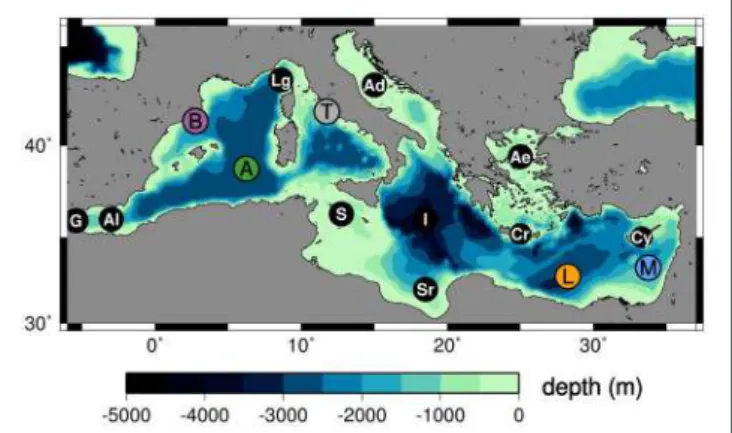
LAGRANGIAN DATA ANALYSIS Preliminary Data Treatment
It is worth underlining that, as explained by Maximenko et al. 2012, Appendix A), the qualitative result of our reconstruction in terms of FLP distribution in accordance with the maxima is not crucially influenced by the original one, but is mainly due to the local flow regime at different scales. The probability distribution obtained from the drifter trajectories was then used to initialize a procedure that iteratively calculates a reconstructed evolution of the FLP density in each bin over 4 days: it sums in each arrival bin the densities of the starting bins at the previous time point multiplied by the relative probabilities of reaching that bin in 4 days (again see Maximenko et al., 2012; Equation 2). Coastal population data along the Mediterranean coasts are taken from the NCEAS Ocean Health Index project dataset (Halpern et al., 2008).
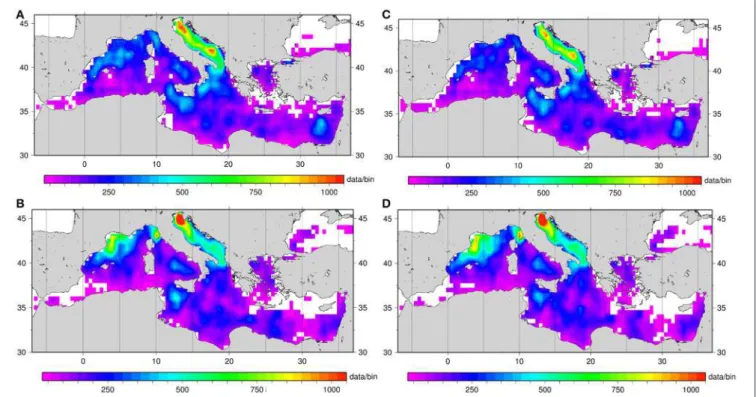
RESULTS AND DISCUSSION
INTRODUCTION
Such studies have identified the physical processes associated with debris transport and accumulation, however, the effectiveness of the models to aid management efforts strongly depends on the assumptions applied to the particle tracking scheme (Critchell and Lambrechts, 2016) as well as the resolution and accuracy of the underlying velocity field (P, 20). Beaching, for example, is a complex process that is not properly represented in most particle tracking models (Lebreton et al., 2012) since the domains of ocean models usually extend to a minimum depth and, therefore, do not resolve the coastline. Additionally, only AMD observations within the model domain and at least 4 km from a boundary were used to initialize the particle tracking model.
METHODS 1. Study Area
- Debris Surveys
- Regional Ocean Model
- Lagrangian Particle Tracking Model
- Analysis Methods
Surface velocities from the ocean model AdriaROMS 4.0 (Russo et al., 2013a,b) are used to model the Lagrangian transport of the observed AMD. The basin-averaged wind is used, as previous studies have found high correlations in the magnitude and direction of surface winds over the Adriatic (Magaldi et al., 2010; Carlson et al., 2016). Drifting AMDs are treated as floating, passive particles and captured by modeled ocean currents using the Particle Tracking and Analysis Tool (PaTATO) for Matlab (Fredj et al., 2016).
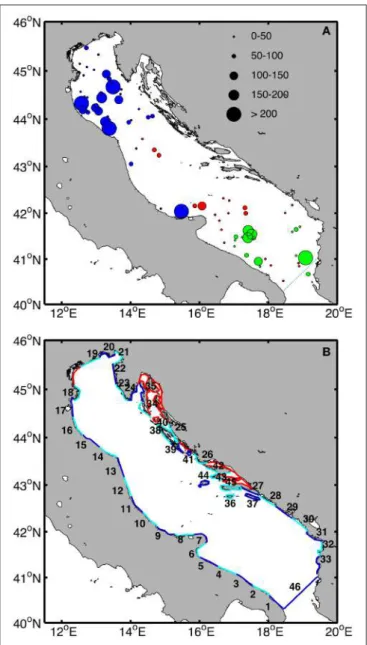
RESULTS
- Floating Debris Survey
- Debris Tracking
- General Summary
The backward and forward connectivity percentages show that a contiguous 400 km stretch of the central Italian coast (segments 7–14) acted as both sources and sinks (Figure 4). Backward particle trajectories suggest that observed debris originates from the Adriatic Sea, as none of the particles came from the open boundary (Table 2, Figures 8, 10A). Backward connectivity percentages confirm that most of the debris observed originated from the central and northern Adriatic (Figure 10A).
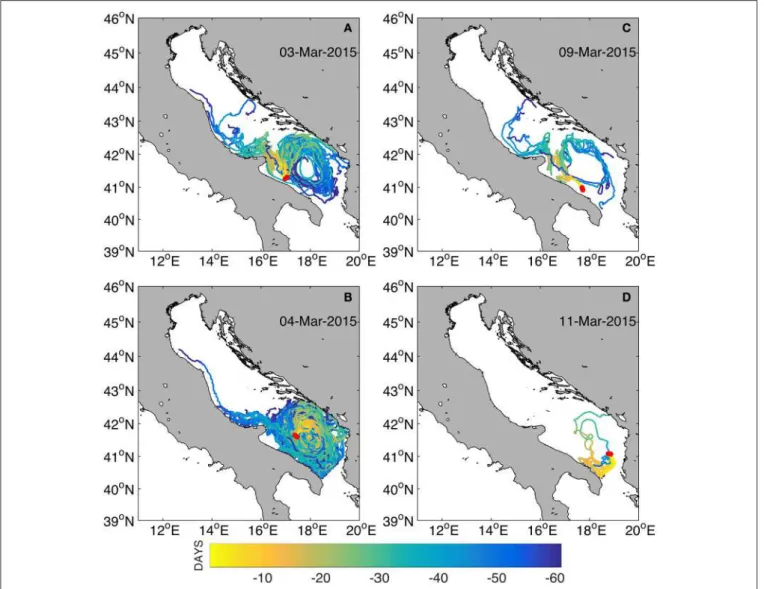
DISCUSSION
- The Adriatic Sea
- General Assessment
Ingestion of marine debris by the loggerhead sea turtle Caretta caretta in the Adriatic Sea. Mar. A regional approach to modeling the transport of floating plastic waste in the Adriatic Sea. Mar. Similarly, the entrainment and deposition of floating marine debris in the Sea of Japan was numerically studied (Yoon et al., 2010).
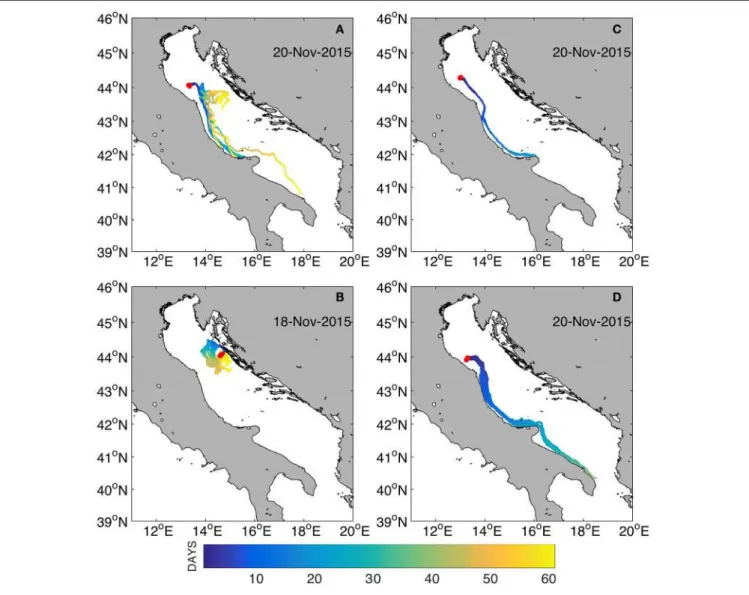
MATERIALS AND METHODS Study Area: The Aegean Sea
This is the first modeling study that discusses the transport of floating debris particles in the Greek waters. Our simulations investigated possible scenarios regarding the fate and distribution of liquid debris particles originating from specific source areas in the Aegean Sea. High concentration of liquid debris was repeatedly found in the northern Aegean Sea (cases A1-A4, experiment B), along the northeastern side of the island of Evia and in the wider area of the Saronic Gulf (cases A1, A3, A4; experiment B) and along the island of Crete (cases A1, A25).
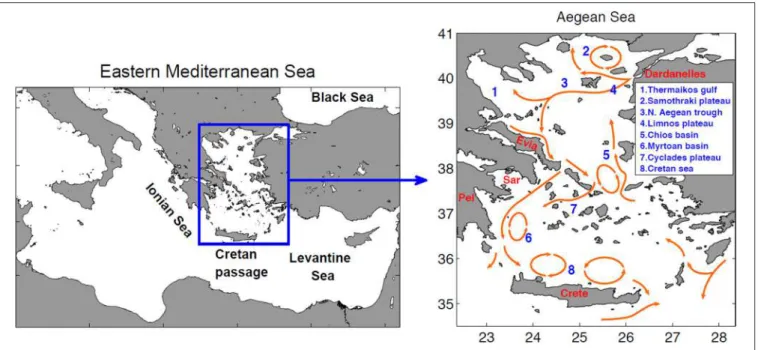
APPENDIX
Cable RN, Beletsky D, Beletsky R, Wigginton K, Locke BW and Duhaime MB (2017) Distribution and modeled transport of plastic pollution in the Great Lakes, the world's largest source of freshwater. It is likely that the effects of plastic waste on the ecosystem in the Great Lakes last longer than assumed based on the lake's washout rate. Together, these efforts are leading to a better understanding of the drivers of freshwater plastic pollution in the Great Lakes and around the world.
MATERIALS AND METHODS Lake Sampling
The trawl with the highest total plastic concentration contained 4 times more plastic than previously reported at the surface of the Great Lakes (Eriksen et al., 2013; Mason et al., 2016). A similar study of marine plastic debris assessed variability by quantifying replicate samples in the North Pacific gyre (Goldstein et al., 2013). In a power analysis by Goldstein et al. 2013), statistical power increased as the number of samples increased.
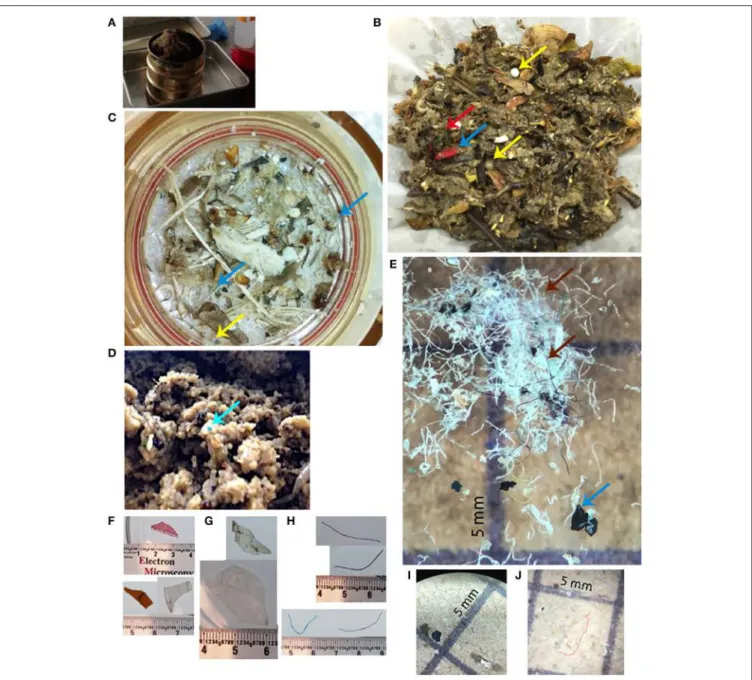
CONCLUSION
Hidden plastics of Lake Ontario, Canada, and their potential preservation in the sediment record. Environ. Distribution of surface plastic debris in the eastern Pacific Ocean from an 11-year data set. Environ. Suspended microplastics in the surface water of the Yangtze estuarine system, China: first observations on occurrence, distribution.
